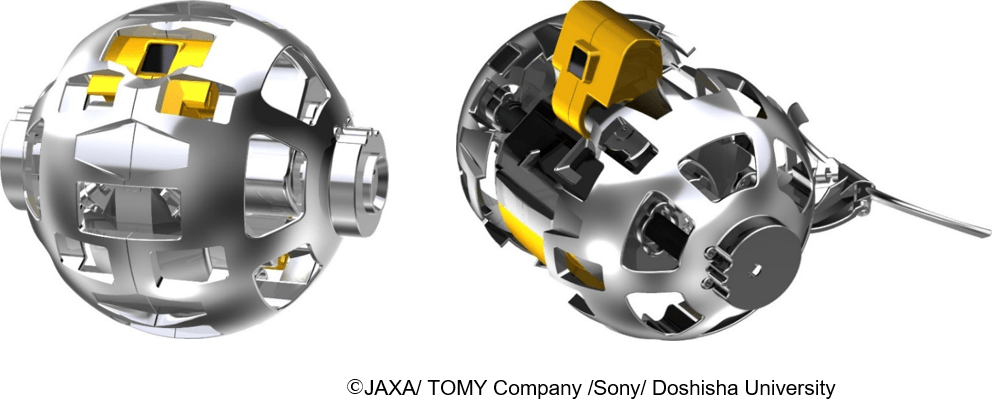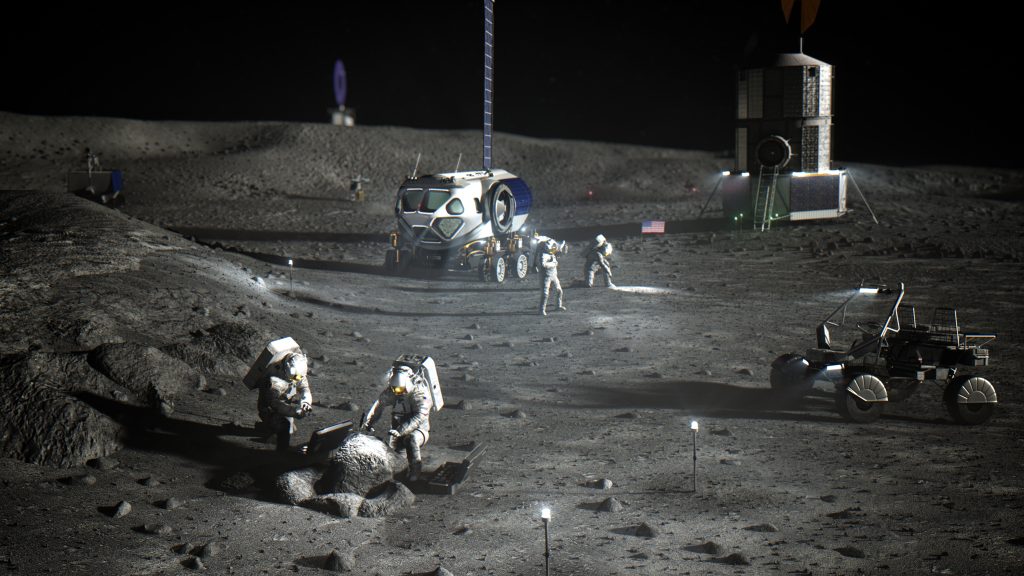A number of missions are destined for the Moon before this decade is over. In addition to the Artemis Program, the European Space Agency (ESA), the China National Space Agency (CNSA), Roscosmos, and other space agencies have some ambitious plans of their own. These include sending robotic missions to characterize the local environment, scout out resources, and pave the way for permanent human outposts.
The Japanese Aerospace Exploration Agency (JAXA) also some very interesting lunar missions in mind. In addition to partnering with NASA on the Artemis Program and helping to create the Lunar Gateway, JAXA has the radical idea to send a transforming rover to the Moon. The data this rover collects will be used to inform the design of a pressurized rover that will allow for a sustained human presence on the Moon.
It all began in 2016, when JAXA's Space Exploration Innovation Hub issued a Request For Proposals (RFP) for lunar exploration concepts. By 2019, this resulted in a conceptual study for a crewed pressurized rover that would give the Artemis astronauts (and partnered space agencies) the ability to conduct extra-vehicular activities (aka. "moonwalks") far away from a surface habitat or a landing site.
As JAXA Vice President Sasaki Hiroshi explained in a recent JAXA press release, the Japanese government's decision to participate in the Artemis program in 2019 also played a vital role:
"Based on the decision, JAXA has been promoting mission development and system studies on international space exploration targeting the Moon and Mars by gathering Japanese technologies and knowledge. In particular, the crewed pressurized rover will play an important role in developing mobility on the lunar surface for sustainable exploration activities. " The data on the lunar surface can be obtained by utilizing the transformable lunar robot which is a production of the Space Exploration Innovation Hub and the lunar landing missions of the commercial company. By making the best use of the data, we will surely proceed with the study on the crewed pressurized rover."
A key aspect of this study was the development of autonomous driving and cruising technology. This is necessary when navigating the unfamiliar and uniquely challenging lunar environment, where the local gravity is roughly 1/6th that of Earth's and the surface is covered in extremely fine regolith ("Moon dust"). However, the study team also concluded that more data was needed about the lunar surface before such technology can be realized.
As a result, in 2021, JAXA entered into in a partnership with the TOMY Company (a toy-making company), electronics giant Sony, and engineers from Doshisha University to jointly develop an ultra-compact and ultra-lightweight robotic explorer. The resulting design incorporated miniaturization technologies provided by TOMY and Doshisha University, electronic control systems provided by Sony, and space-related development technologies provided by JAXA.
Tomimaya Kantaro, Chairman and CEO of TOMY, was also quotes in the JAXA press release. As he indicated, the toy company that his grandfather founded is ideally suited to develop complex robotics systems:
"'It is only in a country with advanced science and technology that toys can be enhanced.” These are the words of my grandfather, the founder of the company. Our ingenuity to make advanced science and technology more familiar and our unique ideas and technology as a toy company have surprised and impressed many children. I believe that we, as a toy company, have the know-how to attract children better than anyone else. "Since the foundation, we have been making toys with safe and reliable quality, a spirit of craftsmanship to pay attention to details, flexible imagination, and above all, a strong will to make children smile. I sincerely hope that we will make use of them in this space exploration opportunity and make children to be more interested in natural science including space."
Most importantly, the robot would be able to transform in order to be ultra-compact and ultra-lightweight, making it more cost-effective to launch and requiring significantly less transportation volume. During flight, the robot will be stowed aboard in its compact configuration, then transform to assume its rover configuration once it is delivered to the Moon using a lunar lander.
As you can see from Fig. 1 (shown above), the robot is spherical in design, with wheels that collapse and extend horizontally along a central chassis. A science suite is also contained in the chassis, as a well as a braking arm that keeps the rover upright when not in motion. As it travels across the lunar surface, it will gather images of the lunar surface to map out its features and characterize the behavior of its regolith.
The lander will be provided by the Tokyo-based commercial lunar exploration company ispace, a company that originated from the Google Lunar XPRIZE competition - in which they were one of the five finalists (team HAKUTO). In April of 2021, after an open bidding process, the company was selected by JAXA to provide lunar transportation services and data acquisition for their robotic mission.
Designated M1 (scheduled for 2022), ispace will transport the transforming rover to the Moon as part of their HAKUTO-R program - the world's first commercial lunar exploration program. The lander will also take images of the surface and act as a relay with mission controllers back on Earth. The resulting data will then be used to develop a localization algorithm and determine the impact that a crewed pressurized rover will have on the local regolith.
This is a major consideration seeing as how lunar regolith is extremely abrasive and sticks to everything (as a result of being statically-charged), which can wreak havoc on mission hardware and astronaut health. Because the Moon is an airless sbody with only 1/6th Earth gravity, dust clouds created by landers, rovers, and other vehicles can travel vast distances and cause disruptions elsewhere.
In the meantime, JAXA will continue to conduct studies into lunar exploration technologies and landing opportunities, which it hopes to pursue in partnership with other space agencies and commercial partners.
Further Reading: JAXA*, ispace*
 Universe Today
Universe Today


